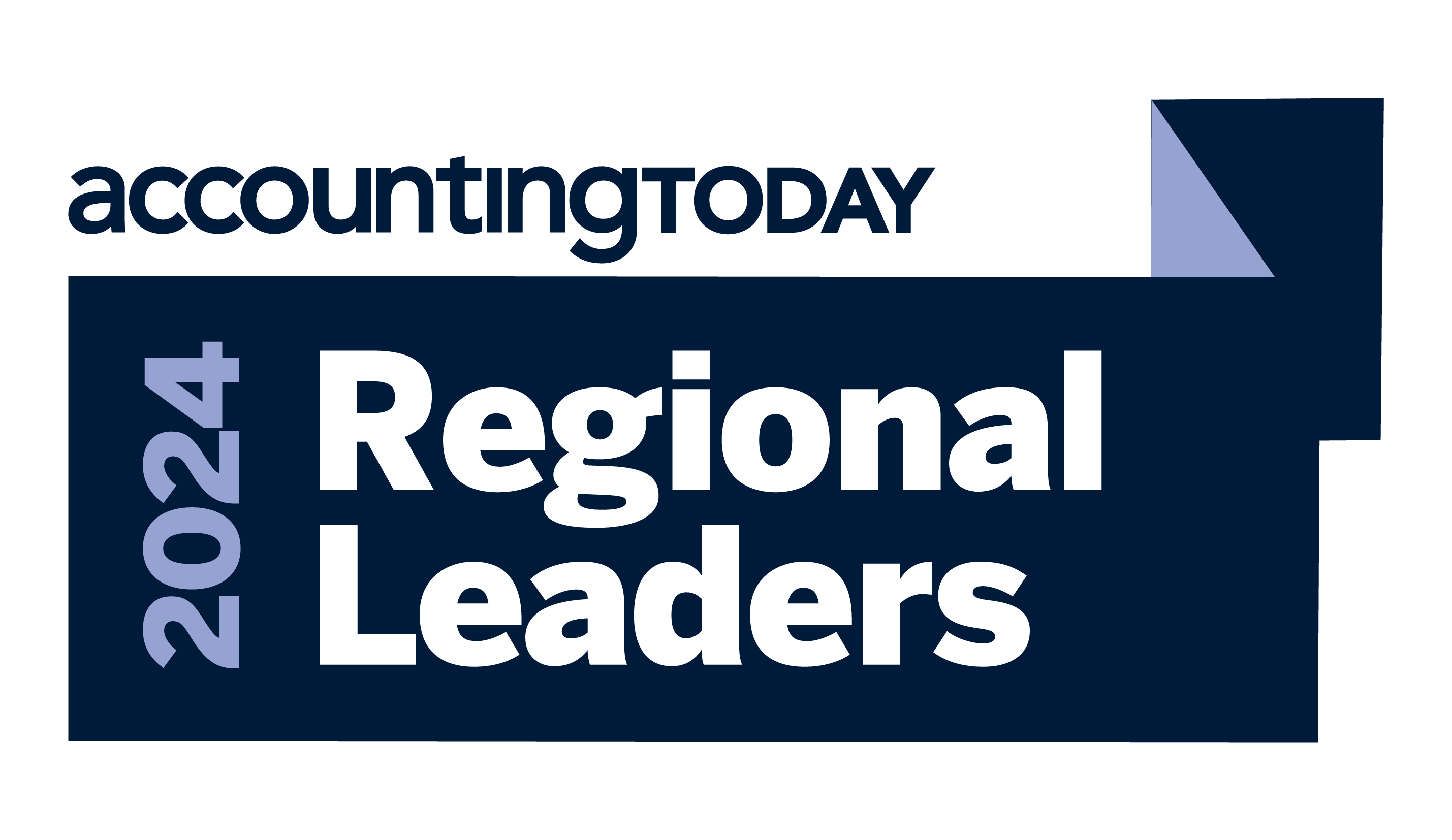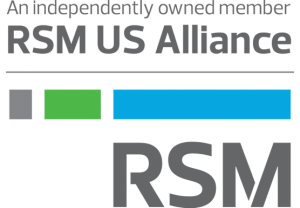Insights
We are proud to be named a West Coast Regional Leader for 2024


Additional section 163(j) final regulations released
More to come, since some section 163(j) rules remain in proposed form
TAX ALERT |
Authored by RSM US LLP
Treasury and the IRS have issued new final regulations (the 2021 Final Regulations) providing rules for applying the section 163(j) limitation on the deductibility of business interest expense. The 2021 Final Regulations cover a number of areas addressed in proposed regulations published in September of 2020. However, regulations on a number of section 163(j) topics remain in proposed form, not yet finalized.
The 2021 Final Regulations provide important guidance in areas such as recapture of the depreciation/amortization addback, applying the limitation to controlled foreign corporations (CFCs), and treatment of ‘self-charged’ interest. We will further discuss aspects of the 2021 Final Regulations addressing CFCs and partnerships in separate Tax Alerts.
The 2021 Final Regulations address selected topics; they are less comprehensive than the final section 163(j) regulations published in September 2020 (the 2020 Final Regulations). We discussed the 2020 Final Regulations in previous Tax Alerts, including this one: Final Business Interest Expense Limitation Regulations.
Background
Section 163(j) limits business interest expense (BIE) deductions. Section 163(j) generally limits a taxpayer’s business interest deductions for a taxable year to the sum of: (1) 30% (50% for some years) of the taxpayer’s adjusted taxable income (ATI) for that year, (2) its business interest income and (3) floor plan financing interest1 (such sum, the Limitation). To the extent a taxpayer’s BIE exceeds the Limitation, the excess cannot be deducted by the taxpayer.2 Instead, the taxpayer may carry this ‘excess BIE’ forward indefinitely, testing its deductibility each year under section 163(j).3 These rules apply broadly to all taxpayers, with limited exceptions for businesses in specific industries,4 and an exemption for small businesses meeting a gross receipts test.5
CFCs
The 2021 Final Regulations contain detailed rules addressing application of the section 163(j) limitation to CFCs.6 These final rules are important to all United States shareholders of CFCs that have business interest expense, unless the CFCs are not subject to section 163(j)—which could be the case if they conduct only excepted businesses or if they qualify for the small business exclusion. We will discuss these rules addressing CFCs in a separate Alert.
ATI adjustments relating to depreciation, depletion and amortization
As noted above, a taxpayer’s Limitation is based on a percentage of its ATI. In common business parlance, ATI is an approximation of earnings before income tax, depreciation and amortization (EBITDA) for tax years beginning prior to Jan 1, 2022 (this Alert refers to these tax years as the EBITDA Period), but is scheduled to change to an approximation of earnings before income tax (EBIT) for tax years beginning after Dec. 31, 2021 (this Alert refers to these tax years as the EBIT Period).7 Note that ATI is computed under federal income tax rules, while EBITDA and EBIT are not.
Adjustments under the Code and the 2020 Final Regulations
For computing ATI under the 2020 Final Regulations, the starting place is tentative taxable income (TTI).8 The 2021 Final Regulations explain that amounts of depreciation, depletion and amortization capitalized under section 263A during the taxable year are deemed to be included in the computation of the TTI for such taxable year, regardless of the period in which the capitalized amount is recovered.9
Under the DD&A ‘add-back’ rule, DD&A for a tax year during the EBITDA Period is added to TTI in computing ATI (the DD&A Add-Back).10 If property generating a DD&A Add-Back is later sold, a corresponding subtraction from TTI is made in computing ATI (the DD&A Add-Back Recapture).11 DD&A Add-Back Recapture also is generally required where the taxpayer sells equity of a partnership or of a consolidated subsidiary where that partnership or subsidiary in turn held property that generated a DD&A Add-Back.12
As an illustration, consider this simple Add-Back example:
Assume company X owns asset Y and uses asset X in its business. Asset Y is depreciable or amortizable, and generates $500,000 of DD&A for company X during the EBITDA period. Company X then sells asset Y.
Regulations require company X to apply DD&A Add-Back Recapture, subtracting from its ATI for the year it sells asset Y all or a portion of the $500,000 Add-Back asset Y generated. The 2020 Final Regulations included a rule requiring an Add-Back Recapture subtracting of the entire $500,000 from TTI.13
Adjustments under the 2021 Final Regulations
The 2021 Final Regulations take an approach that is both more conceptually sound and more fair with respect to the DD&A Add-Back Recapture rule. They aim to require DD&A Add-Back Recapture on the sale of property only to the extent (if any) both (a) the taxpayer obtained a tax benefit from a DD&A Add-Back generated by the property, and (b) the taxpayer recognizes gain on its sale of the property.
This approach is conceptually sound, and is expected to have results that generally are conceptually correct. However, there might be situations where the 2021 Final Regulations rules do not achieve the most conceptually correct result, particularly in the more complicated situations where the taxpayer sells equity of a partnership or of a consolidated subsidiary where that partnership or subsidiary in turn held property that generated a DD&A Add-Back. Nonetheless, Treasury and the IRS did address many concerns expressed by commentators in an attempt to obtain the most policy-appropriate DD&A Add-Back Recapture results even in situations such as the disposition of a consolidated subsidiary.
To limit taxpayer’s DD&A Add-Back Recapture to DD&A with respect to which the taxpayer obtained an Add-Back benefit, a taxpayer’s DD&A Add-Back Recapture adjustment ATI is reduced to the extent the taxpayer establishes that the DD&A Add-Back generated by the property did not result in an increased business interest expense for the year of the DD&A Add-Back.14 Taxpayers accordingly should maintain appropriate tax documentation demonstrating the degree to which their business interest expense has or has not increased as a result of DD&A Add-Backs.
To permit limiting DD&A Add-Back Recapture to assets sales (or other dispositions) at a gain, the 2021 Final Regulations authorize limitation of DD&A Add-Back Recapture to the lesser of (i) any gain recognized on the sale of the property and (ii) the greater of the DD&A allowed or allowable for the EBITDA Period.15 Applying this taxpayer-favorable limitation is not compulsory; the 2021 Final Regulations call it an alternative computation method, and it is available if the taxpayer applies this computation method to all of its DD&A Add-Back Recapture calculations.16
Mutual fund interest dividends
The 2021 Final Regulations provide that a registered investment company (RIC) shareholder that receives a section 163(j) interest dividend may treat the dividend as interest income for purposes of section 163(j), subject to holding period requirements and other limitations.17 A RIC’s total section 163(j) interest dividend amount for a tax year is limited to the excess of the RIC’s business interest income over the sum of its business interest expense and its other deductions properly allocable to the its business interest income.18
Self-charged interest
Interest charged on a loan between a passthrough entity (such as a partnership or an S corporation) and its owner (Self-Charged Interest) can lead to an undesirable tax result, with deductions for the interest expense deductions disallowed under section 163(j) while the lender is taxed on the interest income. An owner of a pass through entity in Self-Charged Interest situation can end up reporting interest income generated by the loan while the interest expense is nondeductible under section 163(j).
The 2021 Final Regulations provide a limited remedy for this Self-Charged Interest problem, allowing certain partners who have made a loan to partnerships to deduct their share of partnership interest expense with respect to the loan even if the interest expense deduction was disallowed to the partnership under section 163(j).19 This remedy does not apply in other situations. For example, it does not apply to loans made by a partnership to a partner, loans made by a partner in an upper tier partnership to a lower tier partnership that the upper tier partnership owns an interest in, or loans made by an S corporation shareholder to an S corporation. Passthrough entities and their owners should consider whether the limited nature of the 2021 Final Regulations’ Self-Charged Interest relief will affect their financing arrangements and plans.
We will discuss the 2021 Final Regulations’ provisions affecting partnerships further in a separate Alert.
Effective dates
The 2021 final regulations generally apply to tax years beginning on or after the date that is 60 days after the regulations are published in the Federal Register. Taxpayer may apply the 2021 Final Regulations to tax years beginning after Dec. 31, 2017, provided that the taxpayer (and certain related parties) consistently apply the provisions of the 2020 Final Regulations, as modified by the 2021 Final Regulations, to that tax year and each subsequent year. A taxpayer may rely on the section 163(j) regulations proposed in September of 2020 (the 2020 Proposed Regulations for tax years beginning on or after the 2021 Final Regulations’ applicability date to the extent a rule in the 2020 Proposed Regulations is not finalized in the 2021 Final Regulations, provided the taxpayer and its related parties consistently apply the provisions of the 2020 Proposed Regulations that have not been finalized to that taxable year and each subsequent taxable year until those rules are finalized.
Section 163(j) regulations remaining in proposed form
A number of provisions included in section 163(j) regulations proposed in September of 2020 were not resolved in the 2021 Final Regulations. These include rules addressing:
- Debt financed distributions from, and debt-financed acquisitions of, passthrough entities;
- Partnership and partner tax basis adjustments upon a partner’s disposition of its partnership interest
- Application of section 163(j) to tiered partnerships;
- Computation of a US shareholder's ATI when a CFC group election is in place; and
- Application of section 163(j) to foreign persons with income effectively connected with a U.S. trade or business.
Conclusion
The 2021 Final Regulations under section 163(j) regulations provide needed guidance; some of the guidance is taxpayer-favorable and some is not. The section 163(j) rules remain highly complex, and some provisions have not yet been finalized but remain in proposed form. Taxpayers should consult their tax advisors with respect to section 163(j) tax compliance and planning.
1Floor plan financing interest generally is interest expense on certain debt funding vehicle inventory purchases.
2Section 163(j)(1).
3Section 163(j)(2). If the taxpayer is a partnership, however, it does not carry the excess BIE forward. Instead, the excess BIE is instead allocated to the partners of the partnership, and the partners may carry it forward indefinitely. Section 163(j)(4)(B).
4Certain farming and real estate business are excepted from section 163(j) on an elective basis. In addition, certain public utility business are exempted from section 163(j) on a mandatory (non-elective) basis. See Section 163(j)(7).
5There is a small business exemption from section 163(j) for business whose gross receipts, together with gross receipts of certain related parties, does not exceed a threshold on a three-year average basis (the threshold is $26 million for 2019 and is indexed for inflation). See Sections 163(j)(3) and 448(c).
6See generally Reg. section 1.163(j)-7.
7Section 163(j)(8)(A).
8Reg. section 1.163(j)-1(b)(1). A taxpayer’s tentative taxable income generally is taxable income prior to application of the Limitation and without any BIE carryforwards. Reg. section 1.163(j)-1(b)(43).
9Reg. section 1.163(j)-1(b)(1)(iii).
10Section 163(j)(A)(v); Reg. sections 1.163(j)-1(b)(1)(i)(D), -1(b)(1)(i)(E), and -1(b)(1)(i)(F).
11Reg. section 1.163(j)-1(b)(1)(ii)(C), -1(b)(1)(ii)(D), and -1(b)(1)(i)(E).
12Reg. sections 1.163(j)-1(b)(1)(i)(E) and -1(b)(1)(i)(F).
13Reg. sections 1.163(j)-1(b)(1)(ii)(C), -1(b)(1)(ii)(D), and -1(b)(1)(i)(E). However, proposed regulations that were issued together with the 2020 Final Regulations would have allowed a different approach, limiting the DD&A Add-back Recapture to the lesser of (i) any gain recognized on the sale of the property, and (ii) the greater of the DD&A allowed or allowable for the EBITDA Period. See Former Prop. Reg. sections 1.163(j)-1(b)(1)(iv)(E)(1), -1(b)(1)(iv)(E)(2), and -1(b)(1)(iv)(E)(3). This proposed ‘lesser of’ calculation method has now been modified and finalized.
14Reg. section 1.163(j)-1(b)(1)(iv)(F).
15See Reg. sections 1.163(j)-1(b)(1)(iv)(E)(1), -1(b)(1)(iv)(E)(2), and -1(b)(1)(iv)(E)(3).
16Reg. section 1.163(j)-1(b)(1)(iv)(E).
17See Reg. section 1.163(j)-1(b)(22)(i)(F).
18See Reg. section 1.163(j)-1(b)(35).
19See Reg. section 1.163(j)-6(n).
Let's Talk!
Call us at +1 213.873.1700, email us at solutions@vasquezcpa.com or fill out the form below and we'll contact you to discuss your specific situation.
This article was written by Stefan Gottschalk, Ben Wasmuth and originally appeared on 2021-01-11.
2020 RSM US LLP. All rights reserved.
https://rsmus.com/what-we-do/services/tax/federal-tax/tax-mergers-and-acquisitions/additional-section-163-j-final-regulations-released.html
The information contained herein is general in nature and based on authorities that are subject to change. RSM US LLP guarantees neither the accuracy nor completeness of any information and is not responsible for any errors or omissions, or for results obtained by others as a result of reliance upon such information. RSM US LLP assumes no obligation to inform the reader of any changes in tax laws or other factors that could affect information contained herein. This publication does not, and is not intended to, provide legal, tax or accounting advice, and readers should consult their tax advisors concerning the application of tax laws to their particular situations. This analysis is not tax advice and is not intended or written to be used, and cannot be used, for purposes of avoiding tax penalties that may be imposed on any taxpayer.
RSM US Alliance provides its members with access to resources of RSM US LLP. RSM US Alliance member firms are separate and independent businesses and legal entities that are responsible for their own acts and omissions, and each is separate and independent from RSM US LLP. RSM US LLP is the U.S. member firm of RSM International, a global network of independent audit, tax, and consulting firms. Members of RSM US Alliance have access to RSM International resources through RSM US LLP but are not member firms of RSM International. Visit rsmus.com/about us for more information regarding RSM US LLP and RSM International. The RSM logo is used under license by RSM US LLP. RSM US Alliance products and services are proprietary to RSM US LLP.

Vasquez & Company LLP is a proud member of the RSM US Alliance, a premier affiliation of independent accounting and consulting firms in the United States. RSM US Alliance provides our firm with access to resources of RSM US LLP, the leading provider of audit, tax and consulting services focused on the middle market. RSM US LLP is a licensed CPA firm and the U.S. member of RSM International, a global network of independent audit, tax and consulting firms with more than 43,000 people in over 120 countries.
Our membership in RSM US Alliance has elevated our capabilities in the marketplace, helping to differentiate our firm from the competition while allowing us to maintain our independence and entrepreneurial culture. We have access to a valuable peer network of like-sized firms as well as a broad range of tools, expertise and technical resources.
For more information on how Vasquez & Company LLP can assist you, please call +1 213.873.1700.
Subscribe to receive important updates from our Insights and Resources.